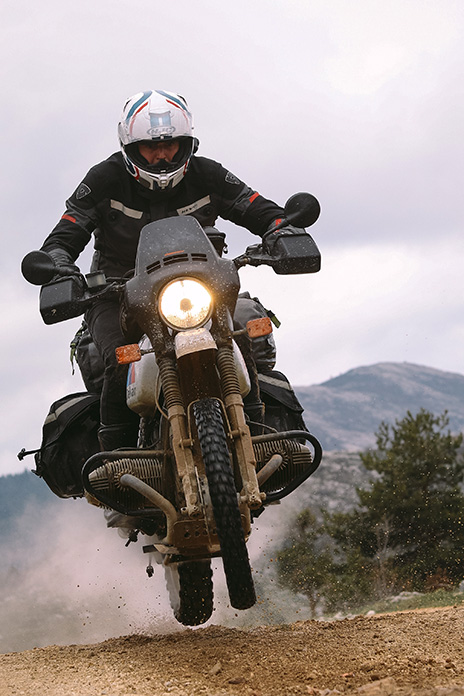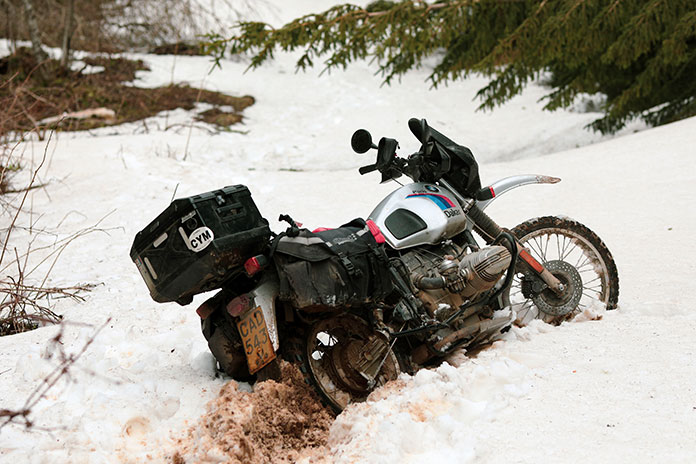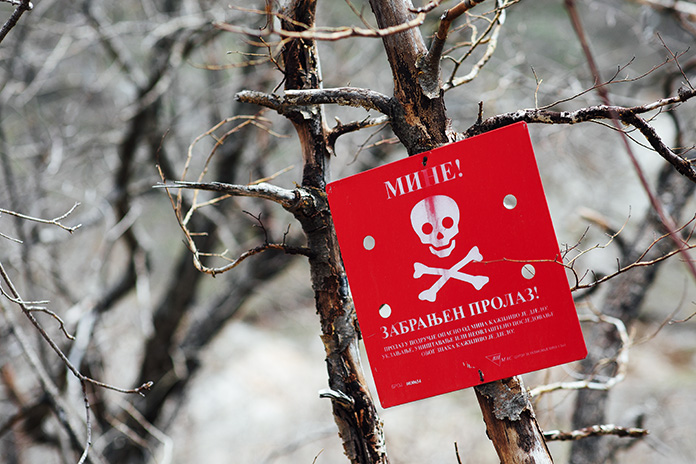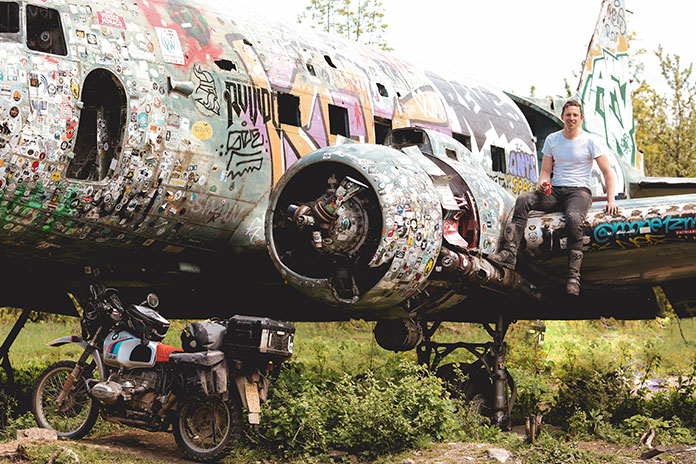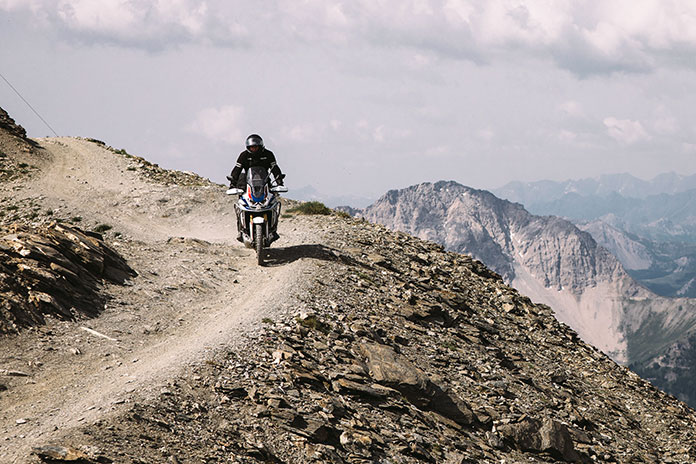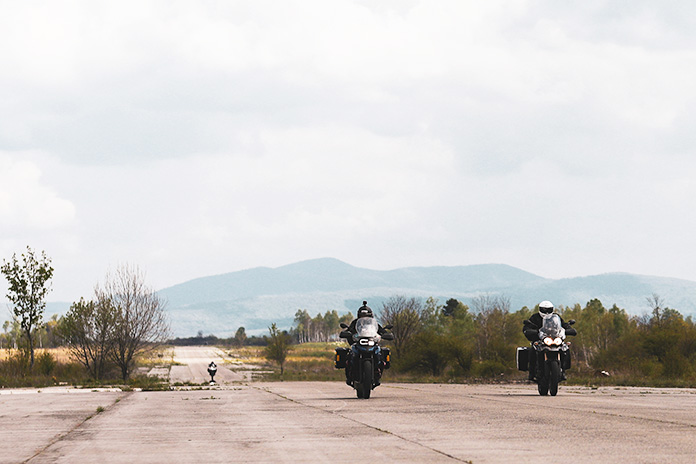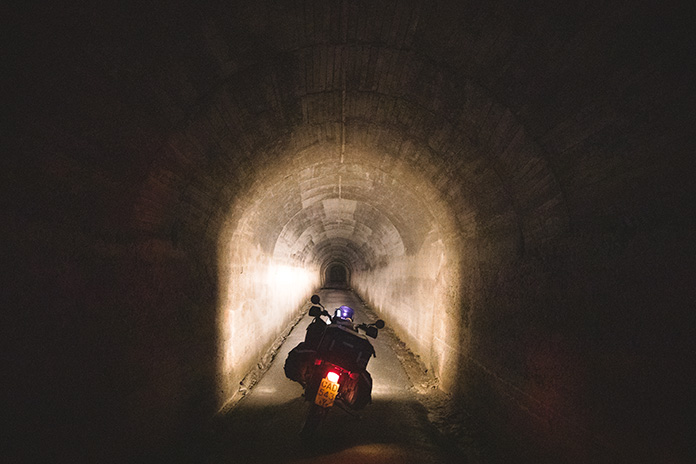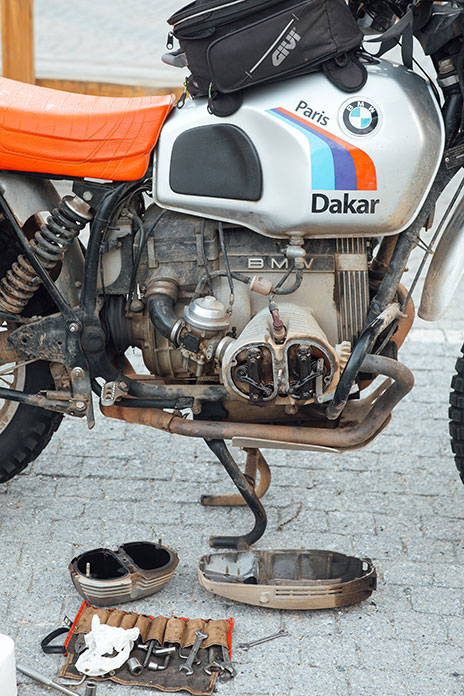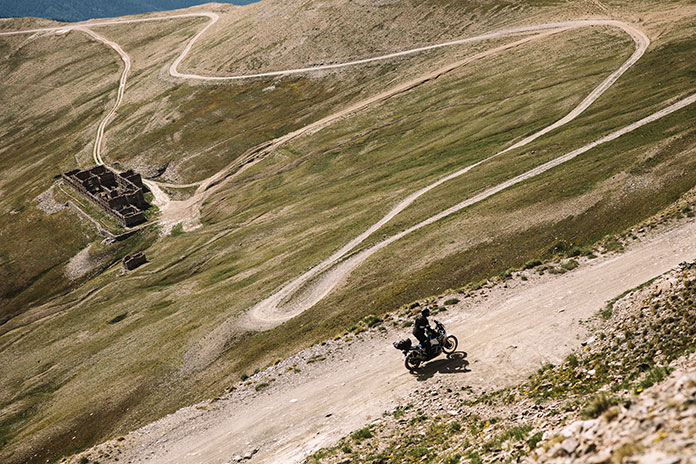We published the first part of Owen Howells’ story and photos about riding the Trans Euro Trail in Albania in our Nov. 2022 Adventure Issue and on our website here. What follows is Part 2, which also appears in our July 2023 Adventure Issue. –Ed.
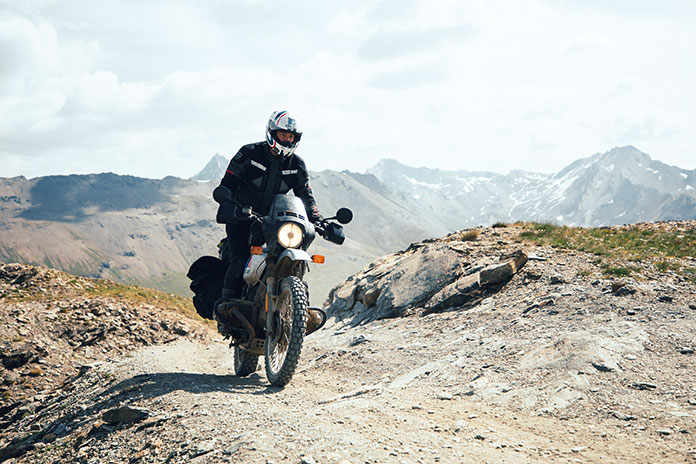
With the Albanian part of the Trans Euro Trail in my mirrors, there remained the small matter of getting my battle-hardened 1982 BMW R 80 G/ST back home to the U.K. Having ridden the Albanian TET from south to north, I ended up near the Montenegro border, and since the TET through Bosnia and Herzegovina and Croatia goes north, it was a viable option for the ride home. I had been traveling for four weeks, and I had two weeks left before I had to be back at work.
Bosnian and Croatian Trans Euro Trail
The trails through Bosnia and Herzegovina were smoother and less challenging than what I’d faced in Albania, so I was able to ride faster and cover more ground in a day.
My heavily laden Airhead was surprisingly adept at a bit of mischief in the corners, skidding the back end with a good jab on the drum brake on entry and getting sideways with low-end grunt on the way out. Humps and bumps allowed a bit of airtime, though somewhat limited by the short-travel suspension bottoming out as the bike returned to terra firma.
Incredibly, after a month of riding, with most days spent on the Trans Euro Trail, I had yet to meet another adventure rider, so I was chuffed when I pulled into Mostar and was greeted by three Germans.
“Are you also riding the TET?” they asked. I guess the shabby state of my bike, its knobby tires, and my overloaded luggage had given me away.
From then on, I encountered a steady stream of TET riders heading south – Germans, Austrians, Poles, and Estonians – on Honda Africa Twins, KTM 1190 Adventures, and BMW R 1250 GSs. But the flavor of the month was clearly the Yamaha Ténéré 700. It seemed every other bike on the trail was a T7, which is hardly a surprise. It’s a great looking, focused adventure bike with an engine capacity that makes a lot of sense for off-roading.
Related: Backcountry Discovery Routes: Two Buddies on Yamaha Ténéré 700s in Utah…
Buoyed by frequent chats with fellow trail enthusiasts, I rode at a spirited pace, but my 40-year-old BMW was a bit worse for wear. The top box hung awkwardly off the back after the rear rack had snapped in two places, and the rear brake was almost useless. I made a running repair on the rack with cable ties and duct tape and then limped to the beautiful Ramsko Lake for my overnight stop.
Repairs, Land Mines, and a Tit on the TET
I found a garage in the lakeside village, and while the mechanic took care of welding the rack, I investigated the rear wheel. The whole drum area was soaked in oil, caused by a few bolts in the bevel drive case working loose. I put thread locker on the bolts, retightened them, and cleaned the drum and shoes as well as I could.
After breakfast and coffee in Kupres, I rejoined the TET heading to Glamoc. A group of TET riders had warned me about impassable snow on this section, so I proceeded with caution. I rode for an hour into the hills before seeing the first patch of snow. Conditions seemed good, and I crested the highest point on the map with no problems.
Soft-arse Ténéré riders, I thought, remembering my challenges in Albania. They probably just rode off the showroom floor. They don’t know struggle!
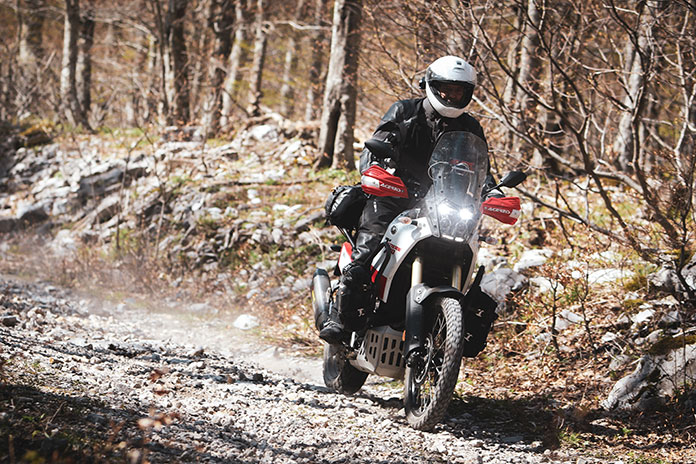
As I began my descent, a wide blanket of snow covered the trail. It didn’t seem too bad, so I just eased off a little and prepared for less traction. Almost immediately the front wheel plunged into a foot of snow, abruptly halting my progress. The rear wheel dug a trench until it spun freely. I was facing downhill, but the bike wouldn’t budge.
I dismounted, surveyed the situation, and scouted ahead on foot. The impenetrable field of snow continued as far as I could be bothered to walk. It would be a long, arduous ride back the way I came, but pressing ahead was impossible.
My bike was impressively stuck, wedged in the deep snow. Retreating meant that I needed to get the BMW turned around. I tried pushing the bike to begin a three-point turn, but it held fast.
The advice on the TET website is clear: Never attempt the TET on your own. Of course, numpties like me disregard this advice, and moments like this demonstrate the folly of that decision. Considering my options, I shuddered at the thought of walking 10 miles back to civilization to get help to retrieve my bike, all the while hoping someone with strong friends wouldn’t steal it before I got back.
I remembered the times in Wales when I’d become equally stuck in mud. One approach is to lean the bike to its side and use the cylinder head as a fulcrum to lever the wheels off the ground. Then, with much grunting and cursing, you can drag the bike out of the problem area. The levering worked, but even with the luggage removed, the BMW was too heavy to drag uphill. At least I was able to spin it around so it was pointing the right way.
When I tried to ride out, the boxer Twin’s wide cylinders sank into the snow, and the rear wheel again spun helplessly. I donned my winter gloves, dug out the snow around the bike, and created a ramp that I covered with fallen branches and sticks to help keep the tires afloat. Though surrounded by snow, I was hot and sweaty from my efforts. I fired up the bike, pushed with all my might, and dropped the clutch. The rear wheel dug into the slushy mud just enough to climb onto the carpet of sticks, and I made my way back to dry land.
I was relieved to have gotten out of a bad spot, but it was my cavalier attitude that got me into that situation. I take it all back, Mr. Ténéré. You were right, and I was definitely wrong!
With my tail between my legs, I trundled back down the hill, having wasted four hours and made it no closer to home. I found an alternate trail on the map and decided that, although it appeared to be harder going, it was preferable to doubling all the way back to the road. Exhaustion was setting in, and I dropped my bike again.
Soon I came across a sign that filled me with dread: a skull and crossbones on a red background with MИHE! (mine!) in big, bold letters. Even though the Yugoslav Wars ended more than two decades ago, war-torn buildings and houses riddled with bullet holes are still a common sight in the Balkans. Efforts have been made to clear land mines, but they are still a danger in some remote areas. The TET website warns riders not to go off the trail where land mine signs are present, and I was happy to heed the advice. But the trail I was on, which wasn’t part of the official TET, wasn’t clearly defined. After a very careful 21-point turn, I finally headed back to the main road.
A Drag Race at an Abandoned Airbase
After a few tough days on the TET in Bosnia and Herzegovina, I followed faster paved roads to reach Zeljava, an abandoned airbase on the Bosnia/Croatia border. I wasn’t sure what to expect upon arrival, but there were no signs or gates to block access. I rode past a rusting Douglas C-47 transport plane and right onto the massive runway.
Zeljava was constructed in the late 1940s to be an indestructible Soviet airbase, with a labyrinth of huge interconnecting tunnels buried deep into the mountain capable of housing hundreds of fighter jets and protecting them from a nuclear blast. The base was partially destroyed during the Yugoslav Wars in the ’90s, and it has been abandoned ever since. Though technically off-limits, the local police got so tired of kicking people out that they no longer bother. Today the huge blast doors sit permanently open, inviting investigation by the curious.
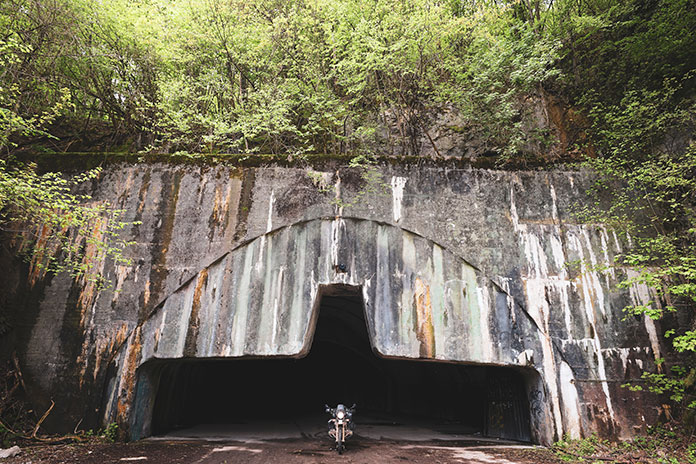
I wasn’t the only one at Zeljava that day. With a kilometer-long runway, there were scores of other bikers competing in run-what-ya-brung drag races. My Airhead got thoroughly embarrassed by a BMW F 800, a Honda VFR800, and a Ducati Multistrada. Even with my belly on the tank, I barely scratched the ton!
From there onwards, the Croatian TET was glorious, with winding woodland trails culminating in elevated views of the Adriatic Sea near the Slovenian border.
See all of Rider‘s international touring stories here.
Altitude Sickness
After riding through Slovenia and attending a friend’s wedding in Italy, I had only three days until I needed to be back at work, so the final jaunt was mostly a road-going affair. But it would’ve been rude to cross the Alps without sampling at least one off-road trail. For bragging rights, I wanted to summit the highest unpaved pass in Europe, but I’d heard it was too snowy at the top, and I didn’t want to repeat that mistake.
Instead, I opted for an unpaved military road built in the late 1800s that climbs up a 9,200-foot mountain in the Cottian Alps in northwestern Italy, near the French border. Perched near the top of the mountain is Fort Jafferau, which was completed in 1898 and used in both world wars.
Compared to what I’d faced in Albania, the trail wasn’t a challenge, but the altitude sure was. In the thin air, my old Beemer wheezed like an asthmatic, barely able to power itself up the hill and frequently dropping to one cylinder.
Bike issues aside, the trail up to the fort was one of the highlights of my multiweek journey, though riding in a pitch-black, 876-meter-long tunnel through the mountain jangled my nerves. A half day spent in the hills meant I had a tougher, faster ride to catch the ferry, but it was entirely worth it.
The Final Push on the Trans Euro Trail
Crossing France in a heatwave via toll roads was torture on my old R 80. All I could do was drone on, squinting at the bright sun made hazy through a graveyard of insects on my faceshield while being blasted by hot air and vibrated into numbness by the knobbies. Fuel stops allowed a few minutes in air conditioning, but I had to pay through the nose for crummy ethanol-laced petrol.
You don’t hear much about this part of road trips. It’s all about Instagram moments of unforgettable experiences, incredible roads, and friends made along the way. But unless you have unlimited time, there comes a point where you’ve got to munch some serious miles, and rarely is it fun. At times like these, I dream about being on a big, smooth, modern sport-tourer – or even better, in a car with the A/C on full blast, a plethora of snacks to graze on, and a good podcast to pass the time.
I wanted to push harder to get it over with, but the R 80’s engine had other ideas. The heat took its toll, and the bike began running rough. The next morning, I checked the valve clearances when the engine was cold. The exhaust valve on the right cylinder was tight, which was not surprising given the 5,000 miles I’d ridden since leaving home – and the going had been rough.
Thanks to the simplicity of the Airhead’s pushrods and rocker arms, the valve adjustment took only a few minutes, and I was soon back on the road with the engine running smooth.
Read all of Rider‘s BMW coverage here.
Reflections on the R 80 G/ST
As I sat in a quiet cafe in Ouistreham, France, waiting for my ferry to the U.K., I admired my R 80 G/ST parked across the road, with its patina of dents, scratches, rust, and dirt accumulated during my six-week journey. When I finished my ST-to-GS conversion, I’d created a beautiful and unique bike, one worthy of keeping pristine for posing at a town square or bike meet.
Has it lost potential resale value? Almost certainly, but the value of the memories is worth far more to me. Every scuff on the paint is a reminder of the adventures we’ve had together, and every scratch is a memento of the struggles we overcame on the trip of a lifetime.
See all of Rider‘s touring stories here.
The post The Ride Home: A Trans Euro Trail Tale, Part 2 appeared first on Rider Magazine.
Source: RiderMagazine.com

